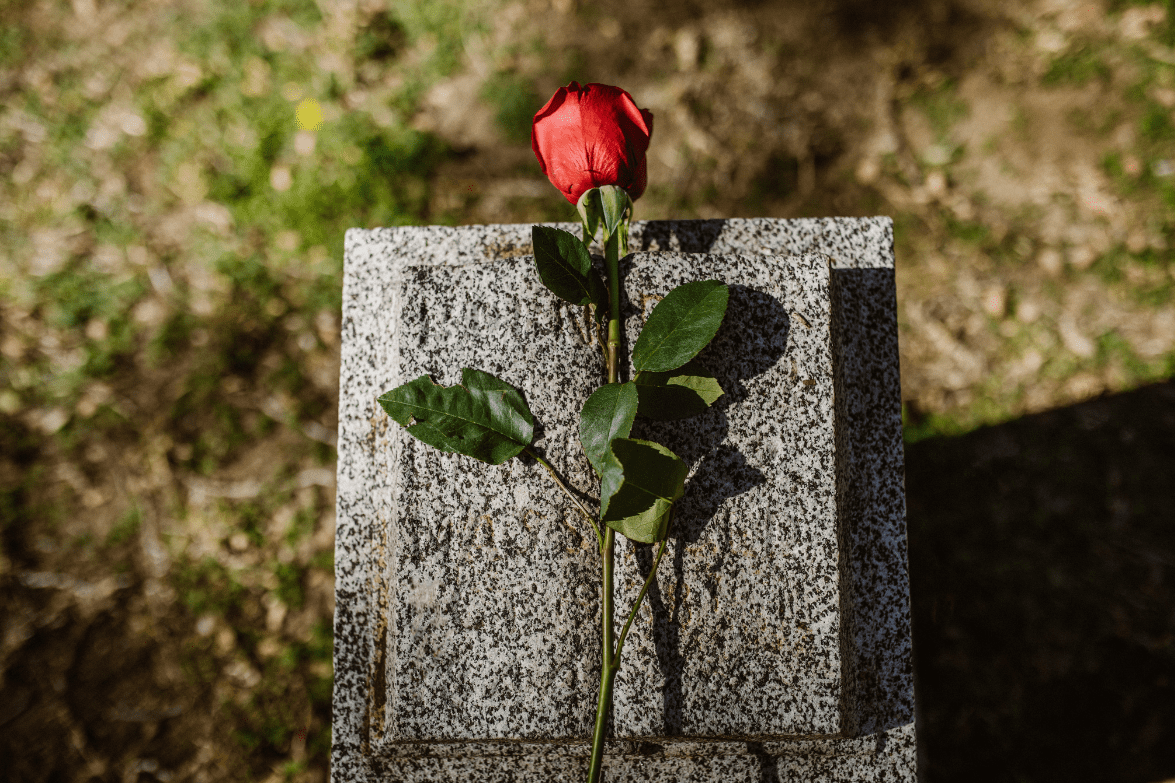The death of a loved one is a near-universal eventuality. But, how we grieve and conduct funeral customs is personally and culturally unique. Let’s learn about seven cross-continental funeral practices people use to process grief and say goodbye.
Africa: Elaborate Funerals in Ghana
Practitioners: Ghana has many ethnic and cultural groups, each of which may have different mourning and funeral customs. However, Ghanaian society shares similarities in funeral practices.
Ghanaian funerals are significant social events. They aren’t just for close family; the entire community gets involved. Planning can take months and cost up to $20,000. Funerals can go on for days, with communal feasting and ongoing remembrance, enabling people from far away to attend and pay their respects.
Funerals may include prayer, socially expected wailing, drumming, dancing, feasting, and traditional black and red mourning clothes.
Depending on the deceased’s social status, families may have a fantasy coffin made. These intricate works of art symbolize the deceased’s life, depicting their occupation, accomplishments, personality, or community ties. The family or community may also rent billboards around town to inform others of the death and funeral.
Asia: Sky Burials in Tibet
Practitioners: Tibetan Buddhists.
Buddhism teaches that death is impermanent, and the spirit will experience rebirth. To help the deceased’s spirit detach from the earthly plain and complete rebirth, Tibetan Buddhists commonly practice sky burials.
During this funeral rite, the deceased’s family wraps the body in white cloth and leaves it in the home for 3 to 5 days. They keep the atmosphere calm and light-hearted so the spirit can pass easily. Following that, the family undresses the body and places it in the fetal position. The body is brought to an outdoor funeral site and put on a platform. The site is usually located in the mountains, away from residential areas.
Monks burn incense, chant mantras to guide the spirit, and leave the body for the vultures. After the vultures eat the flesh, the bones are ground into powder, mixed with barley and yak milk, and fed to other birds. This process is called jhator and serves a few purposes. Providing food for living beings is considered a generous, compassionate act. Also, the elimination of the body removes earthly attachments, allowing the spirit to complete the cycle of rebirth. Lastly, practitioners view vultures as holy birds. When vultures eat all a body’s flesh, the spirit will likely have a good rebirth.
Europe: Wakes in Ireland
Practitioners: Primarily Irish Catholics.
Wakes usually occur at the deceased’s home and last at least one night. Friends and family gather to view the body, share stories, and offer condolences, with the body often displayed in an open casket. Singing, prayers, and sometimes games to celebrate the deceased’s life are common. Food and drink are shared, creating a somber and celebratory atmosphere. The wake allows the community to unite, mourn, and support the grieving family.
North America: New Orleans Jazz Funerals
Practitioners: Residents of New Orleans, especially within African American communities.
New Orleans jazz funerals are a vibrant tradition within the city’s African American communities. They blend African, French, and African American influences. This practice dates back to the late 19th century and begins with a mournful march to the cemetery, accompanied by somber music played by a brass band.
After the burial, the music and atmosphere become upbeat. Friends, family, and community members join the procession to dance and celebrate the deceased’s life, uplift the mood of the mourners, and joyfully honor the dead.
South America: Brazilian Candomblé Funerals
Practitioners: Followers of the Candomblé religion in Brazil.
Candomblé is an Afro-Brazilian religion that evolved from Africans enslaved by the Portuguese Empire and brought to Brazil. It honors a supreme being called Olódùmarè and sub-deities called Orixás. Candomblé also includes Indigenous and Catholic elements.
Practitioners work to accumulate axé, the vital life force of the universe. It’s believed that axé is everywhere in nature. For this reason, people are buried and never cremated. This way, they can share their axé with all living things. Funerals take place in a terreiro (temple). To guide their loved one’s spirit to the ancestors, mourners do ritual purification and give offerings (animals, food, money, etc.) to the Orixás and the deceased. It’s believed that spirits who don’t move on may become evil. People may also hold catholic mass for the dead.
Australia: Aboriginal Sorry Business
Practitioners: Indigenous Australian communities.
Among Indigenous Australian communities, the “Sorry Business” concept is central to mourning. Practices can vary between different Aboriginal groups but may include:
- Not speaking the deceased person’s name, playing audio of their voice, or displaying their picture
- Refraining from activities not related to mourning
- Staying in the house when after a family member dies
- Cutting one’s hair
- Doing specific dances and ceremonies
Extended family and community members participate in sorry business, emphasizing collective mourning and support.
Antarctica: Memorial Services for Researchers
Practitioners: Scientists and workers from various countries stationed in Antarctica.
Antarctica is the only continent without a native population; everyone there, primarily researchers, is from elsewhere. As such, there aren’t well-established death and grief practices. Combined with the challenging landscape and prioritization of survival, traditional ways of honoring the dead may be impossible.
People can’t bury their dead in the frozen ground. Sometimes, a person is suspected of being dead, but no one can find their body. Personal tributes, laying wreaths, placing memorial markers, and building monuments at international science centers are ways people have paid respect to those who’ve died in Antarctica.
Sources:
- https://myend.com/country/ghana/
- https://theworld.org/stories/2022/02/18/ghana-s-fantasy-coffins-fulfilling-burial-dreams-one-coffin-time
- https://www.cnn.com/2014/03/11/world/africa/on-the-road-ghana-funerals/index.html
- https://myend.com/country/tibet/
- https://www.samyeling.org/buddhism-and-meditation/teaching-archive-2/rob-nairn/helping-the-dead/
- https://www.nmfh.org/portfolio-item/jazz-funerals-of-new-orleans/
- https://www.learnreligions.com/candomble-4692500
- https://myend.com/country/brazil/
- https://www.commonground.org.au/article/death-and-sorry-business#:~:text=Sorry%20Business%20is%20a%20period,or%20loss%20in%20other%20circumstances.
- https://www.kateowengallery.com/page/Sorry-Business
- https://www.bbc.com/future/article/20180913-a-frozen-graveyard-the-sad-tales-of-antarcticas-deaths
- https://nzhistory.govt.nz/media/photo/erebus-memorial-service-antarctica-2004

